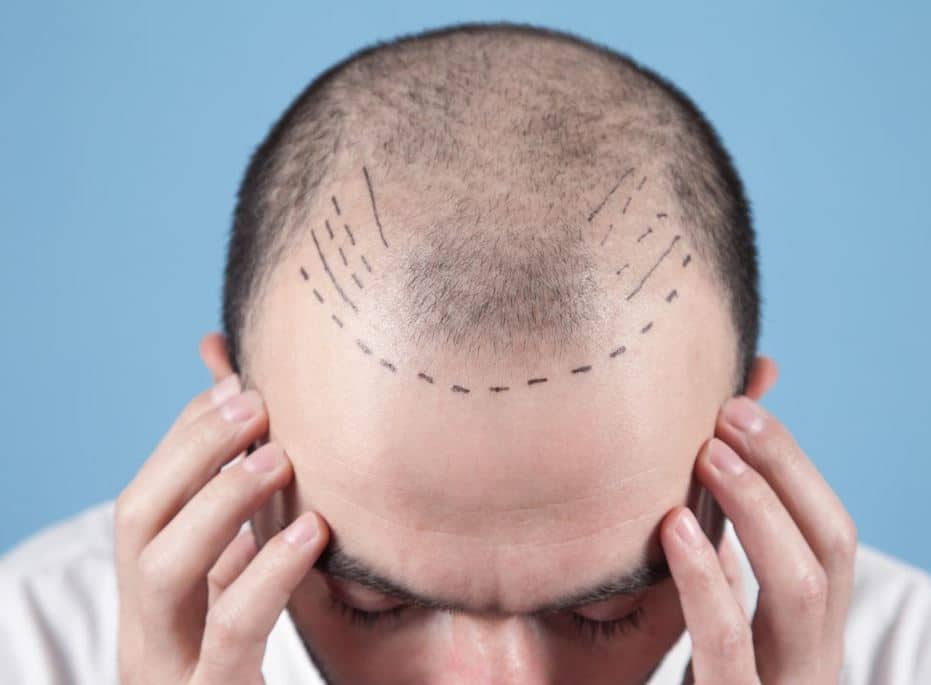How to Treat Male Pattern Baldness – Why Do Men Go Bald?

For men, baldness can be a distressing experience. Many men find themselves avoiding social situations and losing confidence in both personal and professional settings because of hair loss. If you’re feeling conscious and insecure about your thinning hair, don’t suffer in silence. Shapiro Medical Group offers a wide range of hair restoration solutions to restore your hair and confidence.
What Causes Baldness in Men?
Male pattern baldness, also known as androgenetic alopecia, is the most common type of hair loss in men. It is primarily caused by a combination of genetic and hormonal factors. In individuals with a genetic predisposition, hair follicles become sensitive to dihydrotestosterone, a hormone derived from testosterone that causes the hair follicles to shrink. This leads to shorter and finer hair strands until they no longer produce visible hair.
What Are The Signs of Male Pattern Hair Loss?
Male pattern hair loss typically starts with a receding hairline and thinning at the crown of the head. Over time, these areas may merge, resulting in partial or complete baldness on the top of the scalp. The rate and pattern of hair loss can vary among individuals, but it commonly follows a predictable pattern known as the Norwood scale.
Is There A Cure for Baldness In Men?
While there is currently no known cure for male pattern baldness, several treatment options can slow down or reverse the hair loss process. If you’re looking for a permanent solution to baldness, consider getting hair transplant surgery.
Hair Transplant Surgery Can Restore Natural-Looking Hair
Hair transplant surgery involves removing healthy hair follicles from areas of the scalp that are resistant to hair loss, typically the back or sides of the head, and transplanting them to the areas of thinning or baldness. The transplanted hair follicles continue to grow hair naturally, providing a permanent solution to restoring a natural hairline.
Check our previous article: Is a Hair Transplant Permanent?
Our hair transplant surgeons at Shapiro Medical Group are proficient in both follicular unit extraction (FUE) and follicular unit transplantation (FUT). FUE involves harvesting donor hair from the scalp in units using a punch device while FUT involves removing a strip of scalp from the donor area and then harvesting the follicular units for transplantation.
How Many Hair Transplants Can a Person Have?
The number of hair transplants an individual can have depends on various factors, including the extent of their hair loss, donor hair availability, and the desired density of the transplanted hair. In general, multiple hair transplant sessions can be performed over time to achieve the desired results.
Are There Nonsurgical Solutions to Treat Baldness?
For individuals who prefer nonsurgical approaches or are in the early stages of hair loss, several options are available, including oral and topical medications, platelet-plasma treatment for hair loss, scalp micropigmentation, and laser hair therapy. These treatments are designed to manage ongoing hair loss and stimulate dormant hair follicles for hair regrowth.
Find The Right Hair Restoration Solution for You.
Dr. Shapiro and his team will conduct a full evaluation of your hair loss and recommend a comprehensive hair restoration plan that’s aligned with your needs and aesthetic goals.
Explore your options at Shapiro Medical Group. Call us to schedule your consultation. We serve patients all over Minneapolis and surrounding areas including Golden Valley, Columbia Heights, Roseville, Richfield, and the greater Minnesota area.

